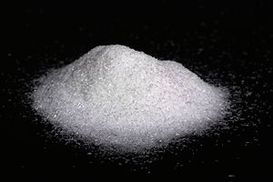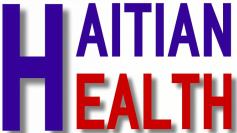 Monosodium glutamate (MSG) is the sodium salt of glutamic acid, an amino acid that is found in many protein-rich foods and involved in many physiological and metabolic functions in the human body [1,2,3]. Its artificial equivalent was invented in 1908 to be used as an additive to enhance food flavor [4]. Since then, monosodium glutamate (MSG) has been manufactured, marketed, sold, and consumed worldwide as a chemical seasoning in the homes, restaurants, and in processed foods [4]. Nowadays, most of the monosodium glutamate commonly found in seasonings (e.g., Maggi bouillon cubes and Accent powder) is produced by bacterial fermentation [5,6,7]. Worldwide, in recent decades, its production and consumption have steadily increased [3,8]. Although “several concerns about the safety of food additives”, particularly MSG, “exist among the general public and health professionals”, including the addition of “unwanted sodium to the diets of persons afflicted with hypertension”, monosodium glutamate has been considered safe under the Generally Recognized as Safe (GRAS) rule [9]. However, several recent studies have provided more documentation of the health effects and environmental hazards associated with the exposure to this chemical. In a longitudinal study by Shi et al. [10], the consumption of an average of 4.0g/day of MSG by 1227 Chinese participants aged 20 years and above led to an increase in fat and sodium intake. There was also an increase in systolic blood pressure and diastolic blood pressure over time during the 5-years follow-up, especially in women and non-smokers. These side effects were seen in the majority of the participants who were non-hypertensive, as well as the 6.2% of the participants diagnosed with hypertension and treated chronically with antihypertensive medications. Consistent with these findings, monosodium glutamate (MSG) was linked with the increase in blood pressure in other studies [11,12,13].
One mechanism by which MSG could induce high blood pressure in humans was investigated in several experimental studies. These research studies suggested the nephrotoxic role of MSG in humans, as evidenced with the chronic intake of this chemical in animal studies [14,15,16]. The impacts of monosodium glutamate (MSG) were also seen on the environment due to the waste produced from the manufacturing process of this chemical. In an experimental risk assessment of MSG wastewater, Liu et al. [17] exposed “15 sterilized seeds of wheat, 25 sterilized seeds of Chinese cabbage, and 25 sterilized seeds of tomato” to diluted (with distilled water) samples of the highly toxic first two discharge phases in MSG production and to undiluted samples from the third and fourth discharge phases. Across the different discharge phases, “on seed germination and root elongation of crops, tomato was the most sensitive to MSG wastewater”. The toxicity of MSG wastewater on the growth ability of seeds of Chinese cabbage and wheat were also observed. A research study done by Liu and Zhou [18] showed that monosodium glutamate manufacturing in China released ammonia into the atmosphere. This man-made excess ammonia can cause respiratory health problems [19]. Considering the social-ecological impacts of this agent, and the goal intended in Healthy People 2020 to increase to 61.25% the percentage of people who have their blood pressure under control, including the people of Haitian descent, it is of the utmost importance that we (i.e., legislators, national leaders, community leaders, public health and medical professionals, and community members) abide by the precautionary principle that stipulates that “preventive, anticipatory measures...[should] be taken when an activity raises threats of harm to the environment, wildlife, or human health, even if some cause-and-effect relationships are not fully established” [9]. As such, a revision of the Generally Recognized as Safe status of MSG is warranted "as new tests establishing harms could prompt removal from the GRAS list [20]. Further investigations could establish causality using the Propensity Score Matching Technique [21]. Meanwhile, the public needs to be made aware of the hazards associated with this pollutant and the culturally appropriate alternatives (i.e., fresh herbs and spices, and non-processed foods) for human consumption through Health education and promotion, and social marketing programs. References 1. Jinap, S., & Hajeb, P. (2010). Glutamate. Its applications in food and contribution to health. Appetite, 55(1), 1-10. doi:10.1016/j.appet.2010.05.002 2. Reeds, P. J. (2000). Dispensable and indispensable amino acids for humans. The Journal of Nutrition, 130(Suppl. 7), 1835-1840. 3. Beyreuther, K., Biesalski, H. K., Fernstrom, J. D., Grimm, P., Hammes, W. P., Heinemann, U., ... Walker, R. (2007). Consensus meeting: monosodium glutamate–an update. European Journal of Clinical Nutrition, 61(3), 304-313. doi:10.1038/sj.ejcn.1602526 4. Sand, j. (2005). A short history of MSG: Good science, bad science, and taste cultures. Gastronomica: The Journal of Critical Food Studies, 5(4), 38-49. doi: 10.1525/gfc.2005.5.4.38 5. Sano, C. (2009). History of glutamate production. The American Journal of Clinical Nutrition. 90(3), 728–732. doi: 10.3945/ajcn.2009.27462F 6. Gupta, S., & Bongers, P. (2011). Bouillon cube process design by applying product driven process synthesis. Chemical Engineering and Processing: Process Intensification, 50(1), 9-15. doi:10.1016/j.cep.2010.10.008 7. Rundlett, K. L., & Armstrong, D. W. (1994). Evaluation of free D‐glutamate in processed foods. Chirality, 6(4), 277-282. doi: 10.1002/chir.530060410 8. Information Handling Services (HIS). (2010, March). Monosodium glutamate. Retrieved from https://www.ihs.com/products/monosodium-glutamate-chemical-economics-handbook.html 9. Friis, R.H. (2012). Essentials of environmental health (2nd ed.). Sudbury, MA: Jones and Bartlett Publishers 10. Shi, Z., Yuan, B., Taylor, A. W., Dai, Y., Pan, X., Gill, T. K., & Wittert, G. A. (2011). Monosodium glutamate is related to a higher increase in blood pressure over 5 years: Findings from the Jiangsu Nutrition Study of Chinese adults. Journal of Hypertension, 29(5), 846-853. doi: 10.1097/HJH.0b013e328344da8e 11. Baad‐Hansen, L., Cairns, B. E., Ernberg, M.,& Svensson, P. (2009). Effect of systemic monosodium glutamate (MSG) on headache and pericranial muscle sensitivity. Cephalalgia, 30(1), 68-76. doi: 10.1111/j.1468-2982.2009.01881.x 12. Insawang, T., Selmi, C., Cha’on, U., Pethlert, S., Yongvanit, P., Areejitranusorn, P., ... Hammock, B. D. (2012). Monosodium glutamate (MSG) intake is associated with the prevalence of metabolic syndrome in a rural Thai population. Nutrition and Metabolism, 9(1), 1-6. doi: 10.1186/1743-7075-9-50 13. Shimada, A., Cairns, B. E., Vad, N., Ulriksen, K., Pedersen, A. M., Svensson, P., & Baad-Hansen, L. (2013). Headache and mechanical sensitization of human pericranial muscles after repeated intake of monosodium glutamate (MSG). Journal of Headache and Pain, 14(1), 1-9. doi: 10.1186/1129-2377-14-2 14. Paul, M. S., Abhilash, M., Varghese, M. V., Alex, M., & Harikumaran Nair, R. (2012). Protective effects of α-tocopherol against oxidative stress related to nephrotoxicity by monosodium glutamate in rats. Toxicology Mechanisms and Methods, 22(8), 625-630. doi: 10.3109/15376516.2012.714008 15. Sharma, A., Prasongwattana, V., Cha’on, U., Selmi, C., Hipkaeo, W., Boonnate, P., ... Reungjui, S. (2013). Monosodium glutamate (MSG) consumption is associated with urolithiasis and urinary tract obstruction in rats. PloS one, 8(9), 1-9. doi: 10.1371/journal.pone.0075546 16. Sharma, A., Wongkham, C., Prasongwattana, V., Boonnate, P., Thanan, R., Reungjui, S., & Cha’on, U. (2014). Proteomic Analysis of Kidney in Rats Chronically Exposed to Monosodium Glutamate. PloS one, 9(12), 1-11. doi: 10.1371/journal.pone.0116233 17. Liu, R., Zhou, Q., Zhang, L., & Guo, H. (2007). Toxic effects of wastewater from various phases of monosodium glutamate production on seed germination and root elongation of crops. Frontiers of Environmental Science & Engineering in China, 1(1), 114-119. 18. Liu, R., & Zhou, Q. (2010). Fluxes and influencing factors of ammonia emission from monosodium glutamate production in Shenyang, China. Bulletin of Environmental Contamination and Toxicology, 85(3), 279-286. doi: 10.1007/s00128-010-0085-y 19. Agency for Toxic Substances and Disease Registry (ATSDR). (2004). Toxicological profile for ammonia: Health effects. Retrieved from Agency for Toxic Substances and Disease Registry (ATSDR). Atlanta, GA, U.S. Department of Health and Human Services, Public Health Service website: http://www.atsdr.cdc.gov/toxprofiles/tp.asp?id=11&tid=2#bookmark07 20. The Center for Public Integrity. (2015). Center for science in the public interest's comments. Re: Substances generally recognized as safe (GRAS). Retrieved from http://www.publicintegrity.org/2015/04/15/17159/center-science-public-interests-comments 21. Ali, M. M., Verrill, L., & Zhang, Y. (2014). Self-reported hand washing behaviors and foodborne illness: A propensity score matching approach. Journal of Food Protection, 77(3), 352-358. doi:10.4315/0362-028X.JFP-13-286
0 Comments
Leave a Reply. |
Mickelder Kercy, M.D. M.S.I learned about the art and science of medicine and was introduced to the community and population-based aspects of public health at the Université Notre Dame d'Haiti. My early practical interventions in the field of public health during medical residency in Haiti fostered my interest in pursuing additional academic training in public health. At Columbia University in the City of New York, I specialized in Public Health with a minor focus on Community Health Education. My special interest is in non-communicable chronic diseases, and the social-ecological approach to health education and promotion in secular and faith-based communities. Archives
October 2017
Categories
All
To subscribe to our blog and receive notifications of new posts by email
|


 RSS Feed
RSS Feed
